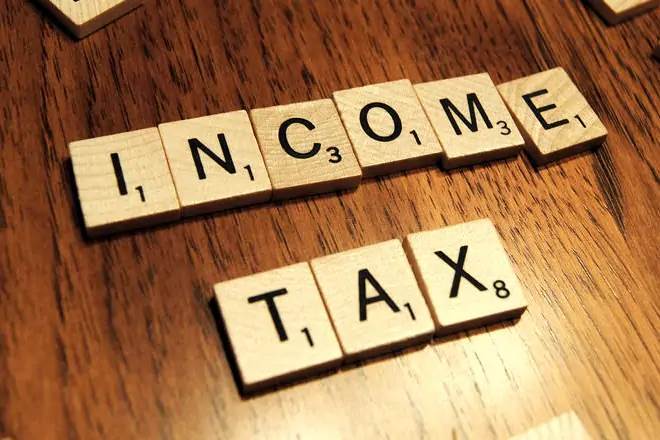Tax saving investments are not only meant just to save tax. As such investments are generally long-term in nature, you may use them effectively to meet your long-term financial goals, provided you plan properly and choose one that would meet the criteria of your financial plan.
For this you have to plan and act early without waiting for the financial year end. Otherwise, forget meeting the long-term goals, you may end up regretting at the time of filing your Income Tax Return (ITR) after missing the deadline of making tax-saving investments.
Read More: Good news for taxpayers! Check how new Income Tax guidelines will benefit you
“People don’t realise their investment mistakes until they file their income tax returns, which could have been avoided with better planning throughout the year. Instead of being a last-minute activity during the year-end, tax planning should ideally be a year-long process designed to achieve your financial goals,” said Archit Gupta, Founder & CEO, Clear.
“Firstly it is important to understand how section 80C helps in tax savings. Section 80C of the Income Tax Act provides a deduction of Rs 1.5 lakh from taxable income on certain investments made during the financial year to individuals and HUF. This deduction cannot be claimed by taxpayers who opt for the new tax regime,” he added.
Gupta lists a few of the most commonly used investment avenues:
Equity-Linked Savings Scheme (ELSS)
ELSS are tax saver mutual funds designed to give you the dual benefit of saving taxes under 80C and getting higher returns from investments in the stock market.
Eligibility: Complete KYC compliance to invest in ELSS.
Lock-in period: 3 years
Return: Market linked but an average of 13 per cent based on past performance.
Investment Limit: Minimum investment varies; No maximum limit.
Tax Treatment: Long-term capital gains(LTCG) are tax-free up to Rs 1 lakh. Dividend income is included in the total income and taxed at the slab rate.
Read More: Looking to invest in bonds? Know tax rules when you buy in primary market and hold till maturity
Fixed Deposits (FDs)
Only 5-year FDs are eligible for tax deduction under Section 80C of up to Rs 1.5 lakh.
Eligibility: Resident Indians.
Lock-in period: 5 years.
Return: Ranges from 5.5-7.75 per cent.
Investment Limit: Minimum investment required is Rs 1,000.
Tax Treatment: Interest earned is taxable at the applicable slab rate.
Public Provident Fund (PPF)
PPFs are long-term investments with low risk as it is government backed. Deposits made in this account are tax deductible up to Rs 1.5 lakh under Section 80C.
Eligibility: Only resident individuals (both salaried and non-salaried). HUF cannot open a PPF account.
Lock-in period: 15 years and can be extended further by 5 years. Partial withdrawals are permitted after 7 years.
Return: 7.1 per cent
Investment Limit: Minimum investment: Rs 500. Maximum investment: Rs 1.5 lakh.
Tax Treatment: Interest earned and the amount withdrawn at maturity are tax-free.
Employees’ Provident Fund (EPF)
For developing a retirement corpus, 12 per cent of your basic salary + DA is deducted by an employer and deposited in an EPF or other recognised provident funds.
Eligibility: All salaried employees having a basic salary of more than Rs 15,000 per month.
Lock-in period: Withdraw their PF balance after two months of quitting their job if they don’t take up employment within that time.
Return: 8.5 per cent for F.Y. 2020-21.
Investment Limit: Minimum contribution from employer and employee- 12 per cent of Basic Pay + D.A.
Tax Treatment: If the EPF balance (including interest) is withdrawn after continuous service of 5 years, the entire EPF amount is tax-free.
National Pension System (NPS)
Tax saving deduction of up to Rs 2 lakh is available if you invest in this scheme. Mainly started to ensure that working professionals and the unorganised sector can get pension income post-retirement. Investments of up to Rs 1.5 lakh are tax deductible under Section 80C. Also, an additional deduction of Rs 50,000 is available.
Eligibility: Indian citizen between the age of 18 and 60 years.
Lock-in period: Partial withdrawal is allowed after 10 years, only under special conditions.
Return: In the range of 12 to 14 per cent
Investment Limit: No limit
Tax Treatment: Employer contributions up to 10 per cent of the basic salary and DA are tax-free (14 per cent in case of central/state government employees)
Unit-Linked Insurance Plans (ULIPs)
A part of the amount invested in Ulips is used to provide insurance cover, and the remaining is invested in the stock market.
Eligibility: Investors can buy Ulip for self, spouse or child.
Lock-in period: 5 years
Return: In the range of 12 to 14 per cent
Investment Limit: No limit
Tax Treatment: Investments, withdrawals and maturity proceeds are tax-free.
Sukanya Samriddhi Yojana (SSY)
This scheme is designed for the betterment of girl children in the country.
Eligibility: Parents or guardians can open an account in the name of a girl child till she attains the age of 10 years.
Lock-in period: Once the girl reaches 18 years of age, a withdrawal of up to 50 per cent is allowed.
Return: 7.6 per cent
Investment Limit: Maximum limit- Rs 1.5 lakh in a financial year.
Tax Treatment: Investments, withdrawals and maturity proceeds are tax-free.
Payments which are eligible for tax deductions under Section 80C:
Life Insurance Premiums
The life insurance premium paid for self, spouse and children’s policy is eligible for tax deduction under Section 80C up to Rs 1.5 lakh if the premium amount is 10 per cent of the sum assured.
Children’s Tuition Fees
Parents can claim a deduction of tuition fees paid for the education of a maximum of two children up to Rs 1.5 lakh. The fee can be paid to any university, school, college or educational institution in India for a full-time course.
Home Loan Repayment
Repayment of principal amount on loan taken to purchase or construct a residential property is eligible for up to Rs 1.5 lakh tax deduction under Section 80C. Even the amount paid as stamp duty, registration fees and transfer expenses can be claimed as a deduction.

































